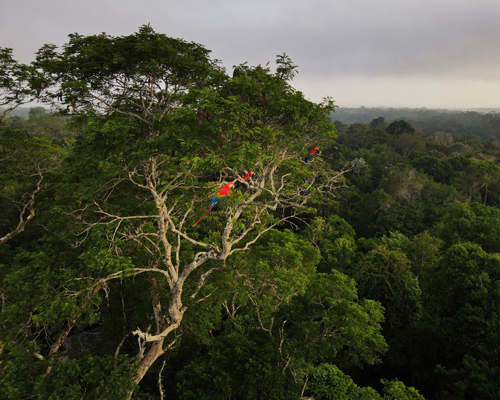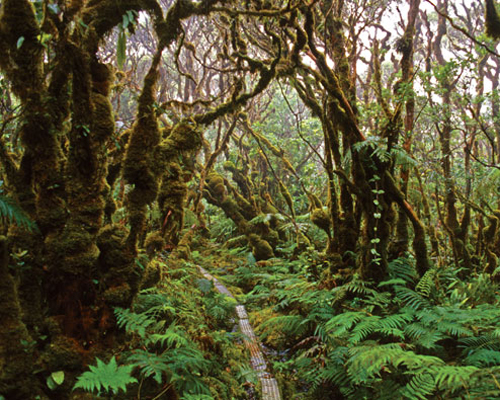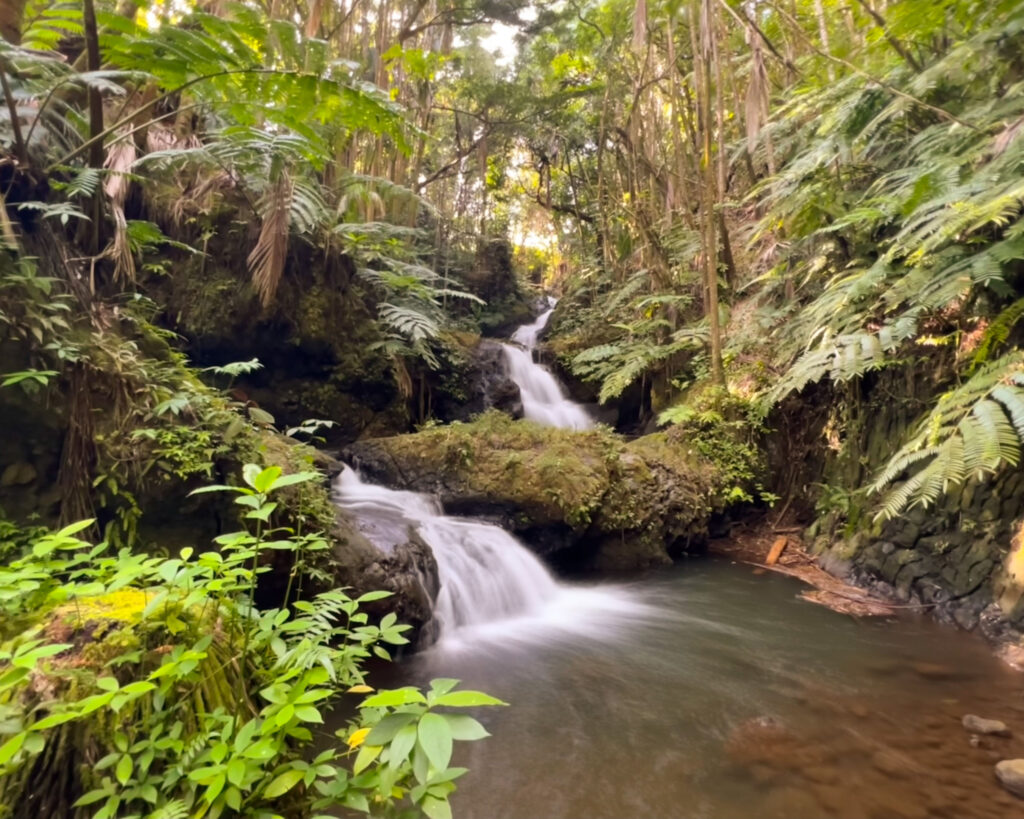TYPICAL RAINFOREST LAYERS

Most rainforests are structured in four layers: emergent, canopy, understory, and forest floor. Each layer has unique characteristics based on differing levels of water, sunlight, and air circulation:
Emergent layer: This layer gets the most sunlight. Colorful birds and butterflies fly above the trees. Small mammals swing through the branches.
Canopy layer: Only a few rays of sunlight shine through this layer. Many small mammals such as sloths and monkeys, and birds such as owls and toucans, live here.
Understory layer: This layer is home to many plant and animal species. With a lot of shade in this layer, snakes, amphibians, bats and all types of plants thrive here.
Forest-floor layer: The lowest layer in the rainforest. Leaves from the layers above block the sunlight making this layer dark and damp. Insects and rodents move around on the dirt floor.
Image by Bruno Kelly for Reuters
Hawaii's tropical rainforest

Hawaii’s tropical rainforests vary in elevations. Moist to wet forests are commonly found on the windward lowland, montane areas on larger islands and mountain tops of smaller islands. They cover an area of 6,700 km² (2,600 sq mi).
Tropical moist forests of Hawai’i occur as mixed mesic forests (about 750–1,250 m elevation), rain forests (found above mixed mesic forests up to 1,700 m), wet shrublands, and bogs in swampy areas. There are forty-eight different forest types found in the Hawaiian Islands.
Native Hawaii rainforest consists of 3 layers:
Canopy layer: Dominated by ohia lehua and acacia koa.
Understory layer: Consists of a variety of smaller trees and shrubs.
Forest-floor layer: Consists mostly of ferns (hapu’u) and berries.








